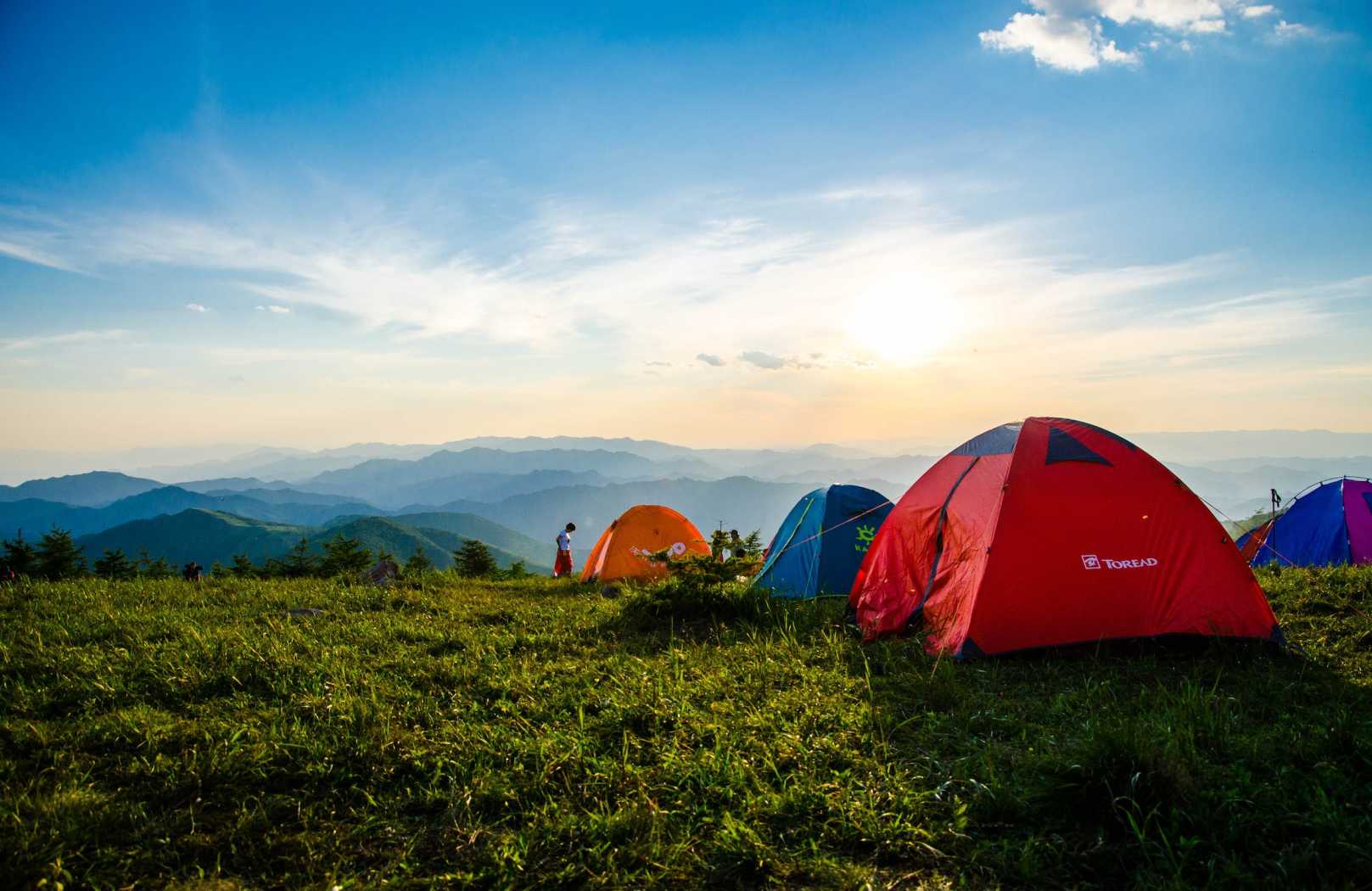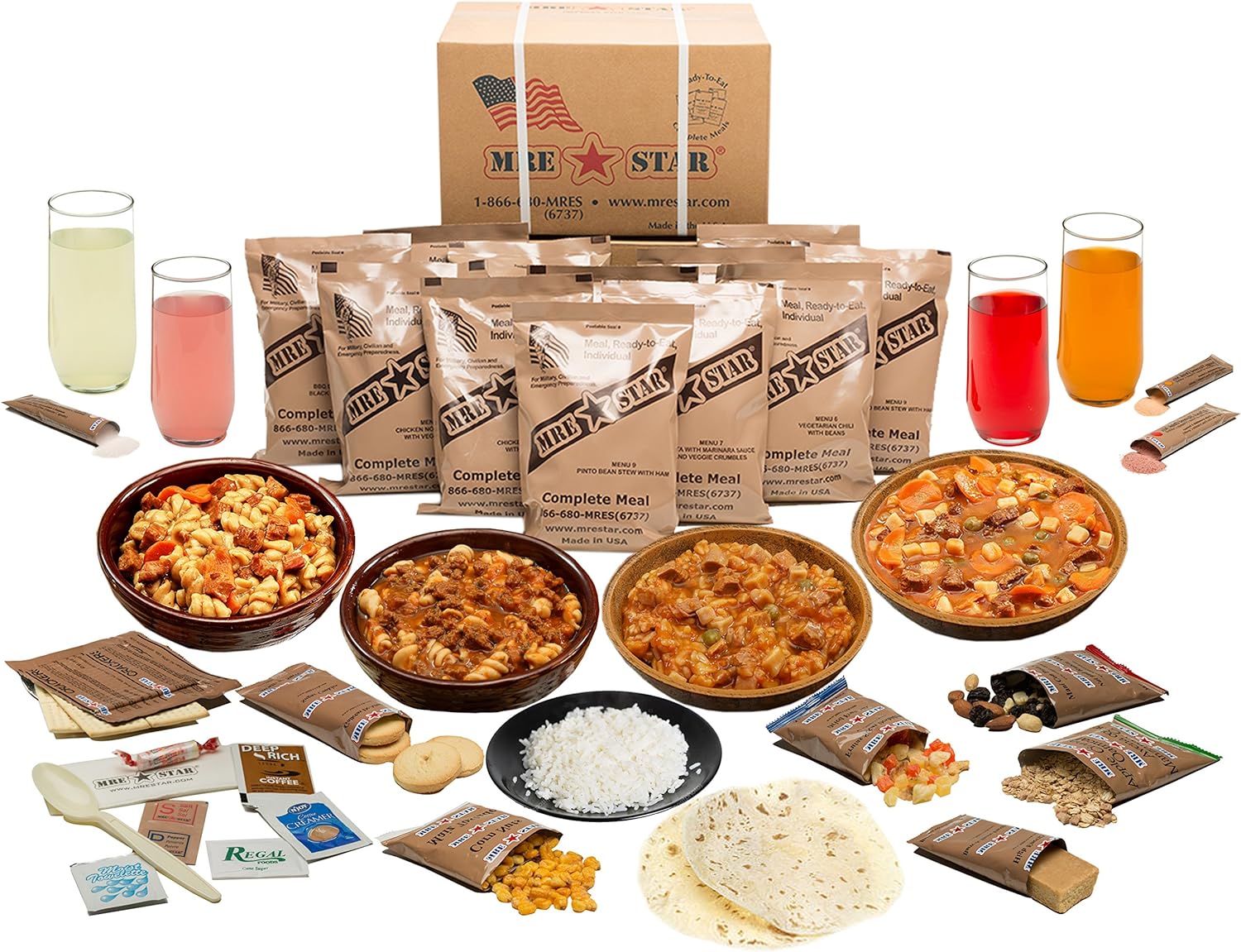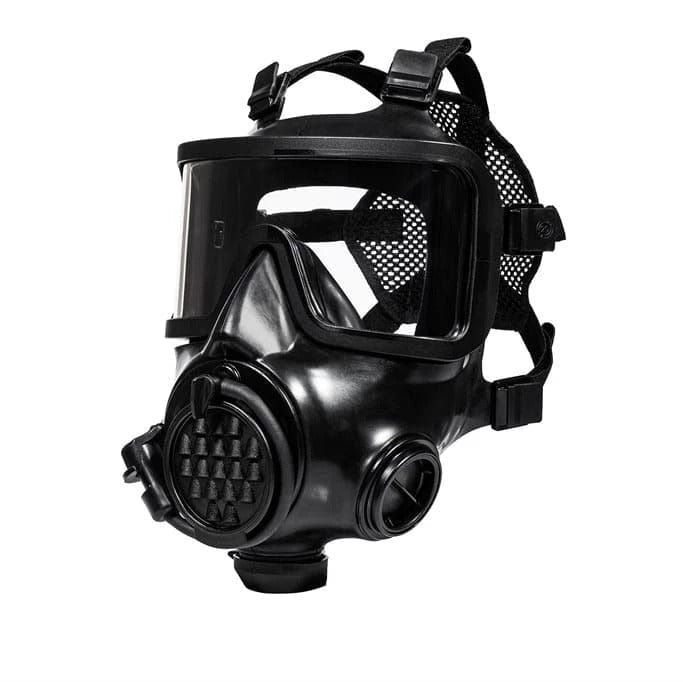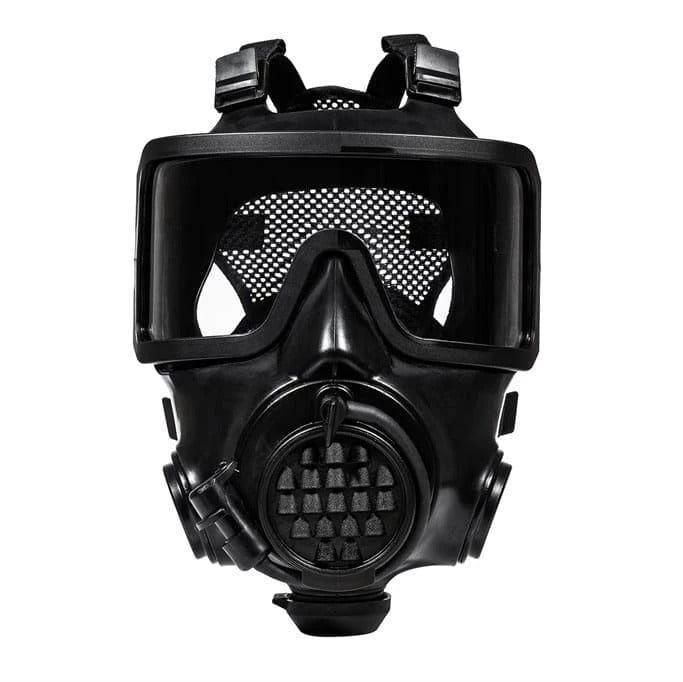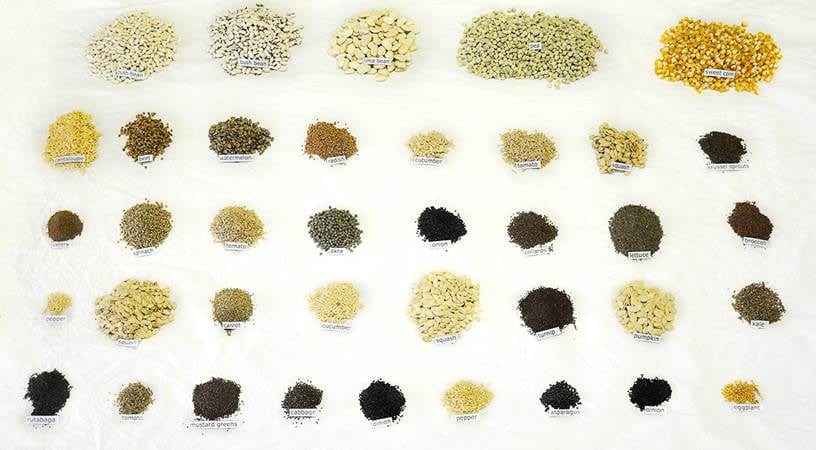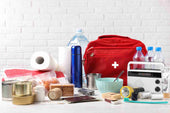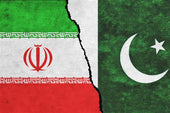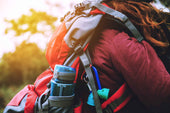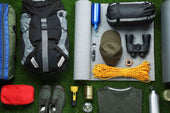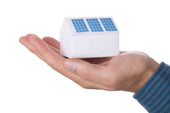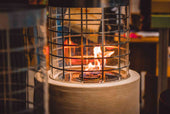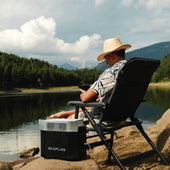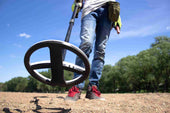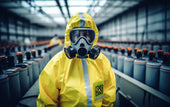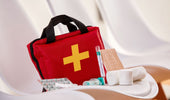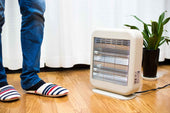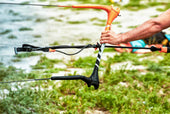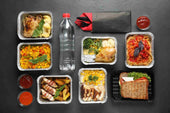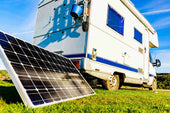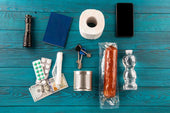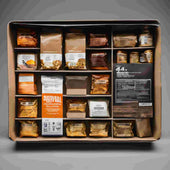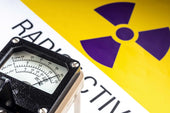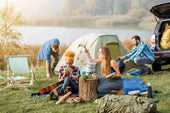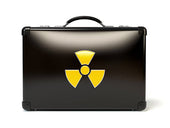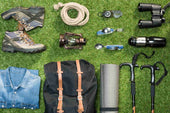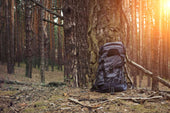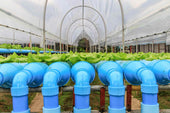Camping Survival: What Do You Need To Prepare?
 Are you ready for your first camping adventure? Well, you're in the right place. This article will discuss camping, its history, procedures, how-tos, and more.
Are you ready for your first camping adventure? Well, you're in the right place. This article will discuss camping, its history, procedures, how-tos, and more.
Before anything else, let us first define the word "camping."
It is an open-air, outdoor activity that involves setting up a tent, camper van, or motor home outside—typically aimed at being one with nature—and eating, sleeping, and staying there for leisure.
Camping is a very generalized term, but you can just associate it with a fun and light social activity that one usually does to escape the stressful urban life and experience a more natural environment for a limited time.
As such, camping has been widely practiced, especially by nature enthusiasts, since the late 19th century and has even emerged as the most common outdoor activity worldwide.
Camping is an all-inclusive activity combined with other adventure activities such as hiking or trekking, fishing, whitewater rafting, and kayaking.
Moreover, depending on your objective, you may go camping alone or with your chosen company—friends, family, or a partner.
1.1 History of Camping
Historically speaking, old Americans have long been utilizing tents. Mongolian and Central Asian nomads and constantly on-the-go armies had also utilized camping for their moving escapades.
However, it is important to note that camping became popular only in the British Isles towards the end of the 19th century, as the Victorian era drew close. A British sailor, Thomas Hiram Holding, also authored the first known camper’s handbook (1908), which detailed the essentials of camping and is regarded as the father of modern recreational camping.
Although he was a tailor, he became one of the movers behind the Camping and Caravanning Club - among the people who have gone about as top of the club is Commander Robert Falcon Scott ('Scott of the Antarctic') and Robert Baden-Powell, founder of the scouting movement.
While individuals took to communing with nature and resting out under the stars to depart from the anxieties of city life, they needed to battle with the components. Here, caravans acted as heroes, and caravanning as a branch-off for setting up camps became well-known during the 1930s.
In the USA, setting up camp became a coordinated movement post WWII, as Americans became more versatile and looked for new recreation choices. Youth groups like the Boy Scouts and Girl Guides consolidate the movement by teaching the excellence and upsides of collaboration and self-reliance through setting up camp and survival activities against the wilds.
1.2 Basic Must-Know in Camping Survival
Camping is a sporting and/or recreational activity, and there is no competition. You must figure out how to live it up and the nature that encompasses you.
To fully enjoy the camping experience, one needs to do the following: (1) bring proper clothes for unforeseen weather conditions, (2) build or set up a shelter that can withstand the rain, snow, wind, or excessive sunlight, (3) bring an adequate amount of food and water to help you stay full and dehydrated, and (4) lastly, dress for utility and not to impress.
The last trip is especially important because most people prioritize an Instagram-worthy outfit and not so much its function.
Preparing for Camping and Survival Gear
 The big question now is how you prepare for camping and survival gear. Can you do it spontaneously? Is it something you do on a whim?
The big question now is how you prepare for camping and survival gear. Can you do it spontaneously? Is it something you do on a whim?
Well, regardless of time constraints, camping entails proper planning, as a lack of preparation can compromise one's safety throughout the activity.
Here are some tips and tricks as to how to prepare for your camping endeavor:
-
Choose a camping location and make a reservation.
Before anything else, a camper —whether you're a newbie or not—must choose the right location for camping.
However, if you have yet to learn the fundamentals of setting up camp, it is smart to camp at a place like KOA, where you are never excessively far from clean bathrooms and laundry shops.
Moreover, you should evaluate yourself in terms of your goals/objectives, the season, campsite accessibility, etc.
First, what is your objective? Before deciding on a camping location, consider why you are going on this trip. Is it to see new spots or visit noteworthy destinations? Do you want to submerge yourself in the outdoors or spend quality time with friends and family around the fire? Setting camp objectives will help you pick the best area.
Next, consider the season at the time of your proposed camping date. As such, you need to pick the best area to suit the season, representing conceivable precipitation and temperatures, and which destinations offer the most picturesque occasional perspectives, notwithstanding your degree of solace with various environments.
Lastly, you need to consider the factor of campsite accessibility. Assuming you are going with small kids, some setting up camp areas (i.e., backpacking excursions, mountain treks, heavy hiking, etc.) might be altogether too difficult for your group. As such, pick a location open to every individual in your group.
Essentially, before visiting a camping area, you should decide whether to spend time away from home or prefer to remain nearby.
-
Consider the amenities at the campsite.
Camping grounds differ in their amenities. Some offer many conveniences, while others are undeniably more natural.
You must know a few early inquiries: Is consumable water accessible? Are there washrooms with showers? Dishwashing offices? Can you buy firewood nearby at any point? Are there any fire restrictions?
Usually, you can find this data on the site where you book your reservation. If not, call the campsite office and talk with one of the hosts about what to expect.
Additionally, you may consider the following amenities for lookout:
Fire rings or Grills
It's vital to follow area limitations or restrictions and share the traditions that must be adhered to when visiting a camping site, particularly concerning fire security. Certain seasons could consider fires while others may not, and you can spread the word about this by sanctioning fire prohibition on your stay.
When fires are safe, you can make things as straightforward as a camper by using a fire ring and firewood, the two of which go far in elevating their experience.
In our review, fire rings and barbecues were the most popular. 62% of campers rated fire rings as a significant convenience for setting up camp.
A local area fire ring is a shrewd method for reducing expenses and uniting individuals if you have various camping areas.
Drinking water
Camping activity is frequently matched with day climbs to investigate new paths or possibly some time spent preparing camp dinners.
This implies that access to adequate water can be of extraordinary assistance to campers, particularly when a camping area is in a distant region away from corner stores or service stations where they could get some. Drinking water came in second, with 59% of campers admitting it is a significant campsite convenience.
Moreover, access to water can come in many structures: from a tap, hose, nozzle, or container to having a camping bubble and cleanse water from a nearby stream or pump.
Toilets and showers
In a camping setting, sanitation stations can be an incredible help to campers. Showers or flushing stations are an astounding plus for campers to clear off following a day outside, while toilet access is expected for all campgrounds, whether given by the Host or the camper himself or herself. In our review, 30% of campers said sterilization stations are a significant convenience while setting up camp.
A camping area shower can be anything from a shower head connected to a hose in a confidential spot to a provided tub that campers can top off. These spaces likewise offer campers the opportunity to be alone with nature, paying attention to leaves stirring and waterfalls.
Pet-friendly campsites
Whether on the rope or not, pet prospect owners like to bring their closest company companions. In the review, permitting pets came in fourth, with 29% of campers choosing this as a significant convenience while setting up camp.
While "pets allowed" is generally synonymous with "dogs allowed," campers can clarify their rules to communicate what is and isn't permitted nearby.
On a serious note, if the camping host, for whatever security reasons, does not permit pets, you should be a responsible camper and follow such a role for the safety and comfort of everyone.
Signage
This is not necessarily an amenity, but you can choose a camping ground that has signage so you, as a camper, can know what part of the street you want to dial back on while making that turn, where the best access to a climbing way is, and where the best berry bushes are. This incorporates signs highlighting where you'd like to stop, set up their shelter, or utilize the bathroom.
-
Research about the camping ground.
At home, with the advantage of areas of internet signal connectivity, do a little research on the encompassing region of your chosen camping ground.
Are there climbing trails you need to investigate? Does water highlight like streams or lakes to swim in? You will likewise need to note spots like the closest supermarket, service station, and (assuming you're wary like us) emergency center.
Ultimately, camping areas are famous for having horrendous cell coverage, so it's smart to get your course of the area in advance.
-
Make a meal plan.
Now, sort out the number of meals you plan to cook and what you need to eat, then make a grocery list to have everything ready before going to the campsite. You need to plan this because a spontaneous trip to the grocery store often leads to forgetting important items. Consider simple-to-plan and easy-to-clean options like Breakfast Sandwiches, Foil Bundle Nachos, and Skillet Enchiladas for meals.
Remember to pack a few tidbits or a snack of your choice. A straightforward cheddar plate and a cold drink sound ideal for going through a bright evening outside. For youngsters, cheddar sticks, crackers, and apples or dried fruits are perfect to have close by to keep them energized while enjoying the camping activity.
The most straightforward method for saving time and making camp cooking a breeze is to plan your meals as you go. This will help you stick to a budget and prepare in advance. As you plan your meal, consider nearby dining options or local eateries you must try while camping.
Notwithstanding which recipes you decide to cook, there are some camp cooking absolute necessities that all campers ought to have close by:
Cooking essentials: Storeroom staples like flavoring mixes, spices, dried herbs, cooking oils, salt and pepper, toppings, and sauces will flavor your food. Pick your essentials according to your meal plan. For instance, you might need to bring grill rubs or sauce to grill or barbecue meat.
Snack items: Choose durable snacks that travel well, such as corn or popcorn, jerky, trail mix, pretzels, granola, or s'mores fixings.
Meal staples: Proteins, starches, and carbs will assist with keeping you full and invigorated. Well-known setting-up camp feasts mostly include potatoes, eggs, barbecuing meats, breakfast meats, new produce, sandwiches, canned beans, soups, filtered water, juice, and sodas.
More tips for easy meal planning:
Consider dietary restrictions: If you are exploring nature with a group, consider everybody's singular inclinations and incorporate veggie lovers, pescatarian, vegetarian, sans dairy, or gluten choices if important.
Prep before you go: To save space and time at the campground, prep what you can at home. Cut, center, and de-seed new produce and stir some omelet elements for a simple pour-and-cook breakfast.
Use storage holders: Plastic food stockpiling compartments and zip packs are perfect for putting away pre-prepared dinners and keeping them secure inside your cooler.
Choose versatile ingredients: Select options that use similar components — such as potatoes, a specific sauce, or fresh vegetables — to keep preparation straightforward and take up less space in the refrigerator or food storage container.
Pack and organize your camping equipment and survival gear.
This step is crucial as it can make or break your camping endeavor. It begins with knowing what to bring and how to utilize those things.
A printable rundown of first-time camping basics is a smart way to organize your possessions and ensure you have not forgotten anything fundamental.
What to bring:
Sleeping bag
Bring along everything you need for a decent night's rest, including quilts, camping beds, sleeping pillows, blankets, inflatable mattresses, or a bed.
Since your body will adjust to a new sleeping arrangement, the least you can do is bring your top choices from home to help your body adapt without any issues. New campers also find eye masks or white noise machines helpful for sound sleep.
The right hiking bed depends on a wet or dry climate and extremely low temperatures. Thin sleeping bags are great for summer conditions, while others are intended for different degrees of cold.
If camping in the ice and snow, you must have the right bed, so check the names before getting them. It's smart to bring more covers than you will need for winter camping.
Campsite Needs
Headlamps, flashlights, lanterns, and outdoor lighting, such as LED tube lights, will keep the camping area bright. You will need a couple of stacks of approved firewood, a cooler with ice, a water container, matches, a lighter, and a fire starter.
For your devices that require batteries, consider acquiring a few extra items in case your light or electric lamp stops working. A compact charger or power bank for your phone or other gadgets is also helpful. If the cellular signal is expected to be poor in your area, you might also need to invest in a Wi-Fi extender or similar device to stay connected.
Cleaning supplies
Remember to tidy up your campground after every dinner and before you leave. Bring garbage sacks, paper towels, a cleaning wipe, and wipes if necessary. Bring cleanliness and toiletries, including towels, washcloths, cleanser, shower shoes, toothbrush and toothpaste, and your contact focal point case and arrangement, if material. You could likewise partake in the solace of a delicate robe and shoes.
Safety Equipment
Stay safe with insect repellent, a water bottle, sunscreen, a first-aid kit, and a portable fire extinguisher. A field guide may also be useful to explore a new area.
Camping for the Ultimate Outdoor Adventure
 To get the ultimate outdoor adventure, plan your camping ahead of time to ensure a smooth experience. Gather your survival gear and consider the smallest (and perhaps, most random) camping equipment you think will greatly help during your trip. Maybe you need a camp wagon for easy carrying?
To get the ultimate outdoor adventure, plan your camping ahead of time to ensure a smooth experience. Gather your survival gear and consider the smallest (and perhaps, most random) camping equipment you think will greatly help during your trip. Maybe you need a camp wagon for easy carrying?
Check out our Coleman Folding Camp Wagon, which can support up to 150 lbs. Or how about a portable water heater to ensure you hydrate with the cleanest water possible? Our Coleman H2oasis Portable Water Heater can dispense hot water up to 125°F in approximately 30 seconds. Or perhaps consider a camp grill or stove so you can still enjoy your favorite food outside the comforts of home.
Ultimately, the quality of your camping experience depends on how much you invest in planning and preparing ahead of time.

